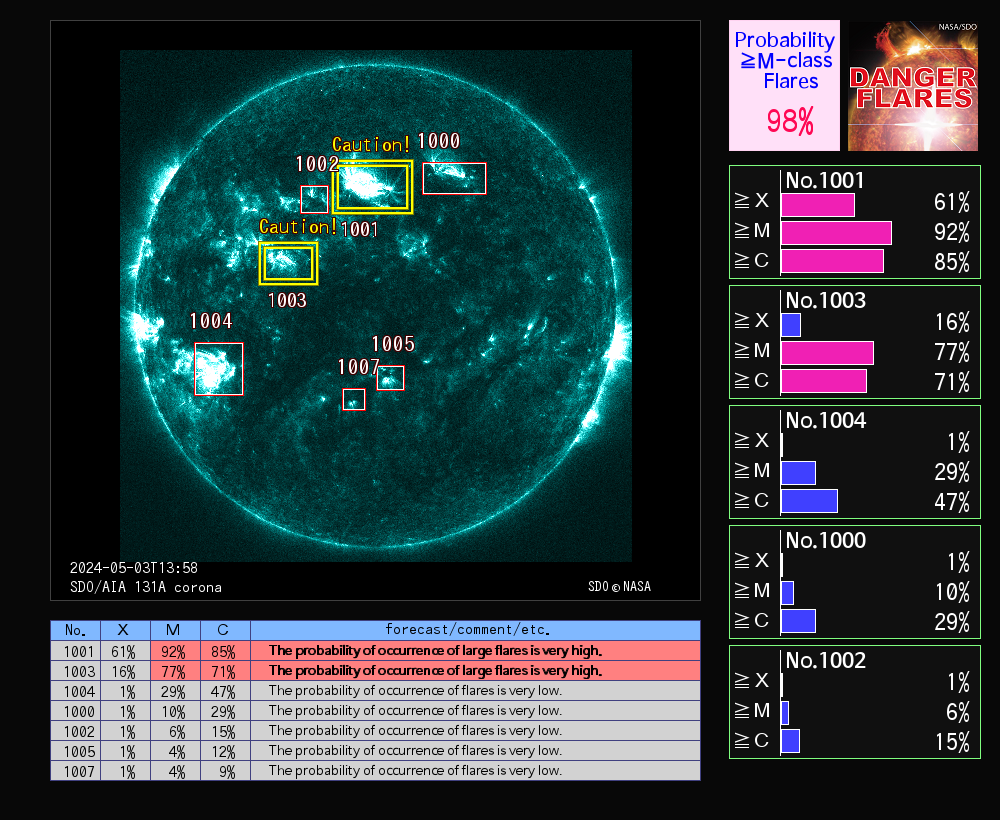
|
◆ Sample images (when solar activity is high) Image01 Image02 Image03 Image04 Image05 Image06 Image07 ◆ About Deep Flare Net (DeFN) ・Our prediction model using deep neural networks, named Deep Flare Net (DeFN), can predict solar flares occurring in the following 24 hr, for >M-class and >C-class ・The training data consists of the line-of-sight magnetograms and vector magnetograms (HMI/SDO), 131A and 1600A images (AIA/SDO) and the soft X-ray data (GOES). ・DeFN automatically detects active regions with relatively strong magnetic field (>40 Gauss). Sunspots without vector magnetograms are neglected. ・Detected regions are numbered for each prediction. IDs of the regions in the solar panel and graphs in the right panels are corresponding. ・The total probability of solar flare occurrence (>M-class) on the disk P is shown in a upper-right panel. When the probabilities of flare occurrence in different regions are denoted by p1, p2, p3..., P=1-(1-p1)(1-p2)(1-p3)... ・See contingency tables in the following papers for the details of DeFN model performance. - Nishizuka et al. 2018, The Astrophysical J., 858, 113 - Nishizuka et al. 2017, The Astrophysical J., 835, 156 We learned two models for >M-class and >C-class predictions. Each model has a personality. They tend not to miss the events but to overforecast. ・The database and code of DeFN model are released free. - Released DeFN Database (WDC@NICT) - Released Code of DeFN (GitHub) ・We will update DeFN model in the future. ◆ Acknowledgement The data used here are courtesy of SDO/NASA, GOES/NOAA and SDO-JSOC team (Stanford University, LMSAL and NASA). |
Today's Solar Activity
Space Weather Forecast (NICT) 



|
